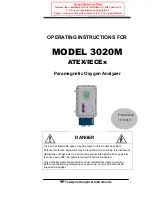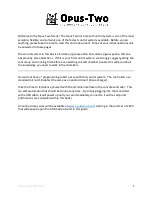
6
Figure 11.
Typical Test Accelerometer Response
7.3 PCB CALIBRATION PROCEDURE
Numerous precautions are taken at PCB to insure
accurate and repeatable results. This section provides a
brief overview of the primary areas of concern.
Since the Back-to-Back Calibration technique relies on
each sensor experiencing an identical acceleration level,
proper mounting of the test sensor to the reference
standard is imperative. Sensors with mounting holes are
attached directly to the reference standard with a stud
tightened to the recommended mounting torque. A
shouldered mounting stud is typically used to prevent
the stud from “bottoming out” in the hole.
Both mounting surfaces are precision-machined and
lapped to provide a smooth, flat interface according to
the manufacturer’s specification. A thin layer of
silicone grease is placed between the mating surfaces to
fill any imperfections and increase the mounting
stiffness. The cables are stress-relieved by first routing
them to the shaker head, securing them with tape or
cable ties, then routing them to a nearby stationary
location. This reduces cable motion, which is especially
important when testing charge output sensors and helps
to prevent extraneous noise or stresses from being
imparted into the system. A typical set-up is shown in
Figure 12.
Figure 12.
Typical Calibration Set-Up
Adhesively mounted sensors use similar practices.
However, in this case, a small portion of quick-bonding
gel or similar temporary adhesive is used to attach the
test sensor to a reference standard designed with a
smooth, flat mounting surface.
In addition to mounting, the selection of the proper
equipment is critical. Some of the more important
considerations include: 1) the reference standard must
be specified and previously calibrated over the
frequency and/or amplitude range of interest; 2) the
shaker should be selected to provide minimal transverse
(lateral) motion and minimal distortion; and 3) the
quality of the meters, signal generator, and other devices
should be selected so as to operate within the limits of
permissible error.
7.4 COMMON MISTAKES
Most calibration errors are caused by simply
overlooking some of the fundamental principals of
dynamics. This section attempts to address some of the
more common concerns.
For stud-mount sensors, always mount the accelerometer
directly to the reference standard. Ensure that the
mounting surfaces are smooth, flat, and free of any
burrs. Always use a coupling fluid, such as silicone
grease, in the mounting interface to maintain a high
mounting stiffness. Mount the sensor according to the
manufacturer’s recommended mounting torque. DO
NOT use any intermediate mounting adaptors, as the
mounted resonant frequency may be reduced and
thereby compromise the high-frequency performance. If
necessary, use adaptor studs.































